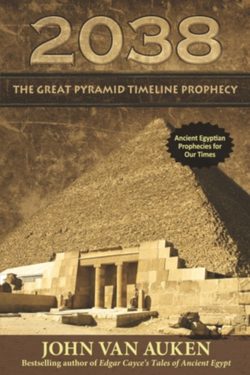Читать книгу 2038 The Great Pyramid Timeline Prophecy - John Van Auken - Страница 8
На сайте Литреса книга снята с продажи.
Historical Accounts of the Great Pyramid
ОглавлениеCa 1850 BC-1600 BC: One of the most important papyruses found in Egypt contains a plea, a lament, and a conversation between an Egyptian of the Old Kingdom called Ipuwer and God. The papyrus is called The Dialogue of Ipuwer and the Lord of All (formally titled Papyrus Leiden I 344, Leiden being the town in Netherlands where the papyrus is housed today). Here again we have a reproduction by a later generation of an earlier artifact for preservation and historical purposes—the papyrus was likely written in the New Kingdom, sometime in the 1200s BC, but Ipuwer lived sometime between 1850 BC and 1600 BC of the Middle Kingdom. Egyptologist Sir Alan Gardiner translated the papyrus into English in 1909 and considered it to be “a single picture of a particular moment in Egyptian history as it was seen by the pessimistic eyes of Ipuwer.” (19, p. 8) What is of interest to us is Ipuwer’s report that the Great Pyramid was forcibly broken into and its contents were removed while the upper chambers above the King’s Chamber were also violently entered. Evidence of this is seen in the rough-cut passages that show no precision workmanship, not the earlier repair crew’s well-cut passage into the original builders’ stone. There are other rough-cut areas within the pyramid that indicate attempts to gain entry without concern for the structure, such as the damage to the large niche of the Queen’s Chamber by persons not concerned with precision. Archaeologist Sir Flinders Petrie wrote: “When, then, was the Pyramid first violated? Probably by the same hands that so ruthlessly destroyed the statues and temples of Khafra, and the Pyramids of Abu Roash, Abusir, and Sakkara. That is to say, probably during the civil wars of the seventh to the tenth dynasties.” [ca 2181-2055 BC] (30, p. 217) Here’s a passage from the Ipuwer Papyrus that appears to confirm the violence but not the date: “All is in ruin. A man kills his brother. Blood is everywhere. A few laws of the judgment hall are cast forth. Officials are slain and their records are taken away. The secrets of the kings of Upper and Lower Egypt are divulged. What the pyramid concealed has become empty and the palace is destroyed” (my italics). (19, p. 9)
24 BC: Greco-Roman geographer and historian Strabo recorded the only known firsthand witness to the original opening of the Great Pyramid. He wrote that there was an entrance on the South (he was confused because he was actually on the North) face that had a hidden door:
“The Greater [pyramid], a little way up one side, has a stone that may be taken out, which being raised up (sublato, meaning to “take up” as in open upward), there is a sloping passage to the foundations.” (38, pp. 84-5)
This is exactly how the original opening of the Great Pyramid is, and it is the entrance to the descending passageway that runs to the very foundation of the edifice.
Again we have an observation from Sir Flinders Petrie: “Strabo’s account is less careful in the dimensions, merely giving roughly a stadium for the height and base of each of the larger Pyramids, and saying that one is a little larger than the other. As these dimensions vary from .85 to 1.25 stadia, he is, at least, quite as accurate as he professes to be. He gives the invaluable description of the Great Pyramid doorway, which so exactly accords with the only remaining doorway of a pyramid.” (30, p. 160)
AD 250: Julius Solinus and others wrote about the phenomenon of the “consumption of the shadow,” referring to a strange characteristic of the Great Pyramid’s outer design that captures the sunlight such that it throws no shadow. When the original siding was on the structure, this occurred twice a day, in the morning at sunrise and the evening at sunset. It was because each side of the Great Pyramid slopes inward to an extremely precise center line, giving the edifice eight sides (see illustration 3) and the highly polished white limestone casing stones reflect the Sun’s light. Many called these moments the “Flash” because it seemed as if the pyramid lit up brightly and no shadows were seen around it on the morning side at sunrise and then again on the evening side at sunset. What is most interesting about Solinus’ writings is that he clearly confirms that in AD 250 the marvelous white limestone casing was still on the Great Pyramid. Today it is largely gone, removed by generations using it to build surrounding structures of the modern era. The exceptions that remain are of a few unpolished and dingy ones (see illustration 4).
AD 820: The entrance to the Great Pyramid that tourists use today was first cut by treasure-seeking Arabs led by Caliph al-Ma’mun, roughly around AD 820. A “caliph” (Arabic khalifa, meaning “successor”) is a chief Islamic civil and religious ruler, regarded as the successor of Mohammed. The original entrance is just above al-Ma’mun’s forced entrance.
